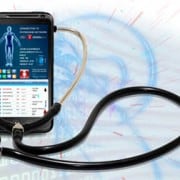The COVID-19 pandemic in 2020 saw a significant shift in the way we did things in our personal and professional lives. In public health, many technological breakthroughs saw a significant and lasting impact for many of us. Jennifer Nuckles, Forbes council member and CEO at R-Zero, points out that there have been a number of technological innovations over the last decade that have had unprecedented opportunities to transform public health. Below, Nuckles dives into three tech trends that continues to impact public health almost every age group and population today and for the future as we know it.
Telehealth
“Obviously, the stay-at-home orders during Covid-19 resulted in an explosion in telehealth. But even as the pandemic has eased, telehealth continues to see rapid growth. Projections estimate telehealth will be a $286.22 billion industry by 2030. Some of the most significant benefits of telehealth include improved accessibility for underserved populations, decreases in hospital readmissions, increased adherence to treatment plans, reduced exposure to illness for caregivers and patients and increases in satisfaction of care for caregivers and patients.”
Artificial Intelligence
“AI is already making its mark across a wide breadth of industries, and public health is no exception. By mining its virtually unlimited trove of resources, AI tools can help humans with interpretation, a key facet of the work done by medical professionals. Perhaps the most exciting thing about AI’s effects on public health is that the best is seemingly yet to come. AI gets smarter and learns more by the second, and the possibilities of what AI can accomplish in the medical industry are exciting to consider.”
Indoor Air Health
“Issues with indoor air quality have gone unchecked for too long. Coming out of the pandemic, there have been significant strides made in improving the health of indoor air. In May, the Centers for Disease Control and Prevention released a new health-based ventilation target to improve indoor air, with the American Society of Heating, Refrigerating and Air-Conditioning Engineers (ASHRAE) releasing its own enhanced ventilation standard shortly after. These new standards ensure accountability and change for ventilation in indoor spaces, which previously existed without a target goal. Poor ventilation has been linked to various physical and mental health effects. In fact, new research my company conducted with The Harris Poll shows that roughly one-half of Americans say their physical (44%) and mental (51%) health is negatively impacted by being indoors for long periods of time.”
For Full Article, Click Here


